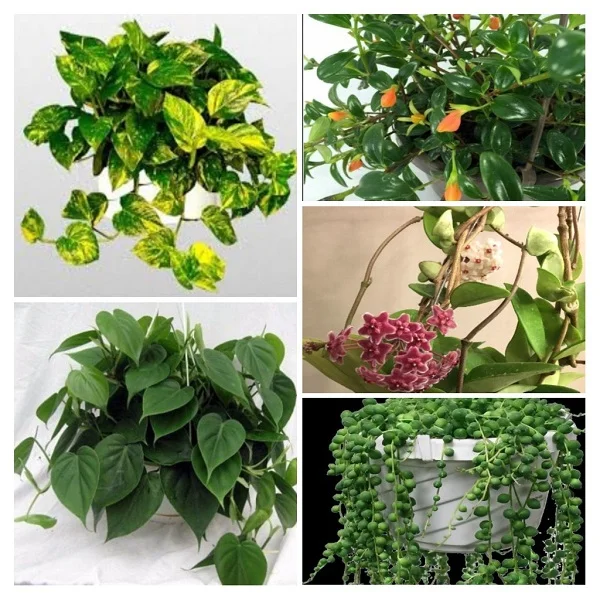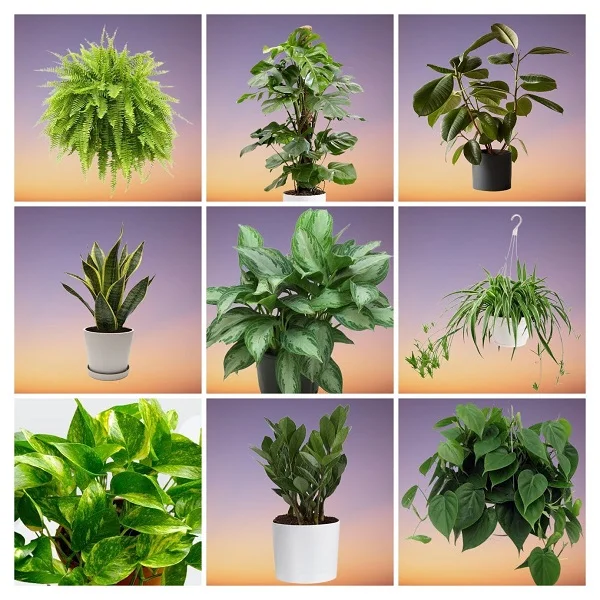22 Low Light Small Indoor Plants: Small Plants that Don't Need Sunlight
Some links in this post may be affiliate links
Small Indoor Plants for low light spaces are perfect for spots that don't receive sunlight as they are small enough to fit in these places and still continue to grow.
However, it is important to note that, though some plants can tolerate low light conditions, no plant can thrive in absolute darkness.
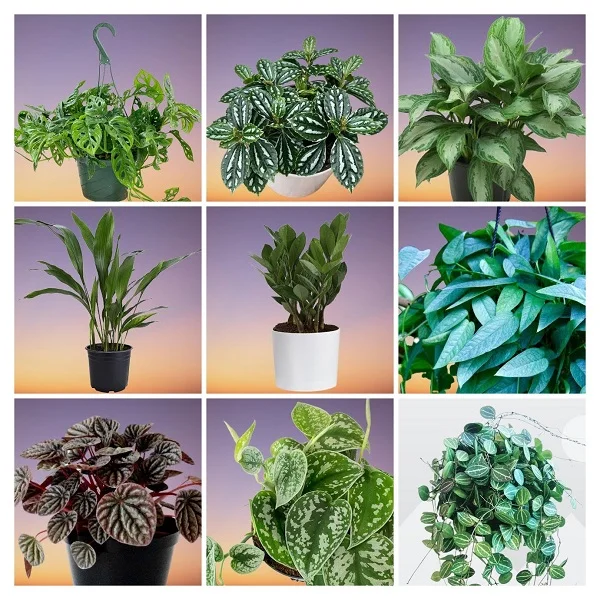
The reason for this is because every plant requires light for photosynthesis to make food that is needed for growth and development of the plant.
Therefore, plants can only last for short periods in a dark space after which they begin to deteriorate. It is of outmost importance to ensure that plants receive some amount of light at least three times a week.
The low light small houseplants can be grown on a table-top, on a plant shelf, on a pedestal, on a windowsill, in a hanging basket or any other dark place where space is limited.
22 Best Small Houseplants that Don't Need Sunlight
Small plants that don't need sunlight are ZZ Plant, Pothos, Heartleaf Philodendron, Spider Plant, Chinese Evergreens, Cobweb Spiderwort, English Ivy, Asparagus Fern, Parlour Palm, Silver Monstera among others. Keep reading to get the full list.
1. ZZ Plant (Zamioculcas zamiifolia)
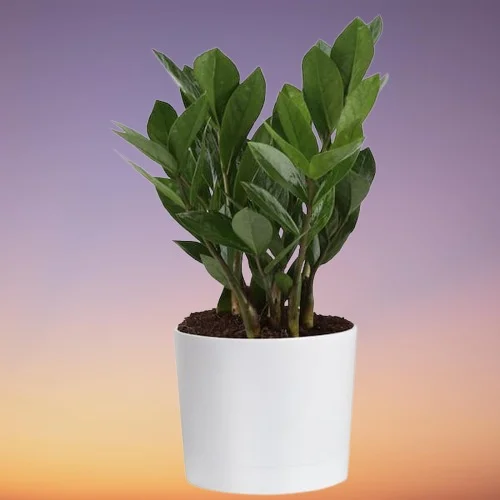
ZZ Plant also called Zanzibar Gem, Zuzu Plant, Aroid Palm or Emerald Palm is a highly tolerant plant with attractive glossy foliage and is ideal for small spaces.
Zanzibar Gem is highly tolerant to low light, dry conditions but does not like direct sunlight. ZZ Plant is a popular houseplant and is considered to be amongst the best plants for the home.
Zamioculcas zamiifolia thrives in medium to bright indirect light, average warmth, modeate humidity and moderately moist, fertile, well-draining soil.
Read more on how to grow and care for ZZ Plant
2. Pothos (Scindapsus aureus)

Pothos also called Devil's Ivy, Devil's Vine or Money Plant are popular colourful plants with air purifying properties and are easy to grow even for the beginner.
The Pothos varieties can be treated as a trailer in a hanging basket or as a climber on a moss-stick, a trellis or a wall or as a table-top plant.
Scindapsus aureus will thrive in medium to bright indirect light, moderately warm and humid conditions, and moderately moist, rich, well-drained soil.
Learn more on how to grow and care for Scindapsus aureus
3. Chinese Evergreens (Aglaonema)
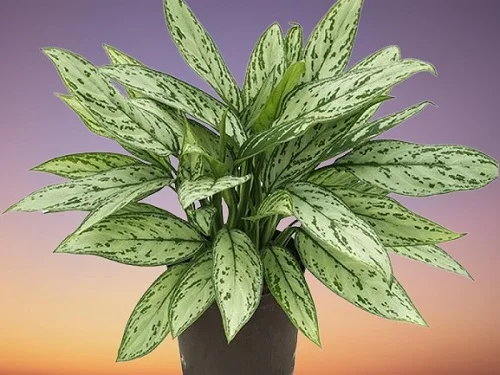
Chinese Evergreens are easy-care, air-cleaning plants that easily adapt to varying light amounts; they will even thrive in the poorly lit spots.
Many Aglaonema varieties are small-sized plants with a minimum outward spread and are ideal for limited spaces. With their colorful sword-shaped leaves borne on short stems they will add a splash of color in indoor spaces.
Aglaonema thrive in medium to bright indirect light, warm and humid conditions and moderately moist, well-drained soils.
Learn more on how to grow and care for Chinese Evergreens
4. Cobweb Spiderwort (Tradescantia sillamontana)
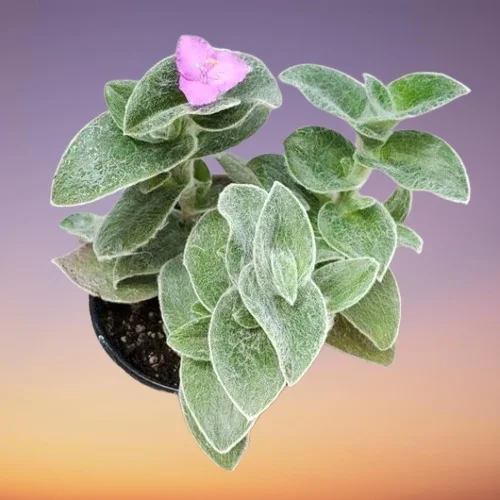
Cobweb Spiderwort also called White Velvet Plant or White Gossamer Plant is among the compact, upright Tradescantia varieties which bears highly branched hairy stems and oblong-lanceolate leaves in the shape of a boat's keel and may have a purple tone.
The flowers in White Velvet Plant are borne at the end of the stems and are a deep pink color. The entire plant is covered by white hairs and hence the common names. It grows to a height of about 1 foot.
Tradescantia sillamontana blossoms in bright indirect light, warmth of 16-270C, humidity of 50-55% and moderately moist, fertile, free-draining succulents mix coupled with monthly feeding during the growing season.
Read more on how to grow and care for Cobweb Spiderwort
5. Heartleaf Philodendron (Philodendron scandens)
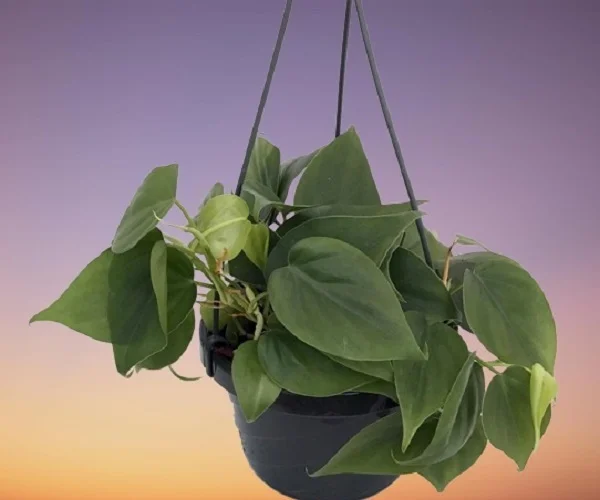
Heartleaf Philodendron also called Sweetheart Plant is one of the popular climbing Philodendron varieties that is ideal for a hanging basket, a pedestal, a trellis, a moss-pole, a shelf or a table-top.
Sweetheart Plant is an easy-care, air-cleaning plant with a high tolerance to neglect and poor growing conditions and easily adapts to the indoors.
Philodendron scandens will grow in medium to bright indirect light, warm and humid conditions and moderately moist, fertile, well-drained soils.
Learn more on how to grow and care for Heartleaf Philodendron
6. Arrowhead Vine (Syngonium podophyllum)
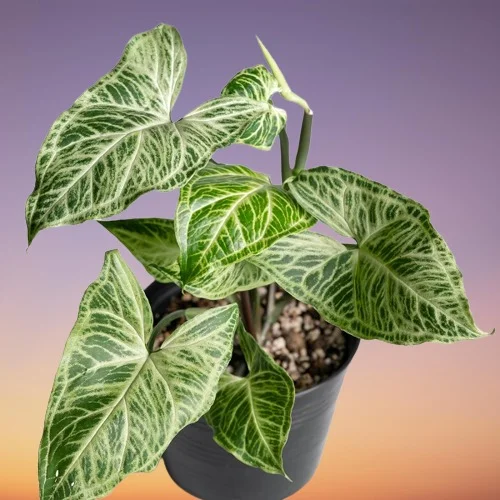
Arrowhead Vine also called Goosefoot Vine, Arrowhead Plant, African Evergreen, Arrowhead Philodendron, American Evergreen or Nephthytis are compact, fast-growing plants with arrow-shaped leaves which dramatically change in shape as the plant ages.
There are many Syngonium plants varieties with the main difference being in the position and extent of the cream or white markings. Some leaves are almost entirely white, pink, red or yellow.
Syngonium podophyllum flourishes in bright indirect light, warmth of 15-280C, humidity of 50-55% and consistently moist, rich, well-drained soils coupled with monthly feeding in the growing season.
Read more on how to grow and care for Arrowhead Vines
7. Asparagus Fern (Asparagus plumosus)

Asparagus fern also called Asparagus Grass or Lace Fern is ideal for a hanging basket or a table-top where the beautiful, feathery, needle-like branches can gracefully droop downwards.
Lace Fern is among the popular Asparagus ferns that adapts easily to a wide variation in light, heat and frequency of watering. It is a hardy plant that can tolerate some level of neglect.
Asparagus plumosus thrives in medium to bright indirect light, cool to average warmth and moderately moist, rich, well-drained soils.
Learn more on how to grow and care for Asparagus Fern
8. English Ivy (Hedera helix)
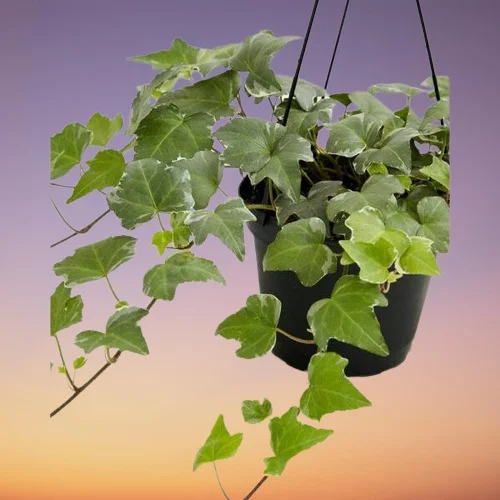
English Ivy also called Common Ivy or European Ivy is a climbing plant ideal for a hanging basket, a trellis, a pedestal, a table top, a shelf and other limited spaces.
European Ivy is a hardy plant with air cleaning properties and will withstand a wide range of growing conditions and will not die from a few days neglect. It is among the best air-purifying plants and gets rid of formaldehyde, benzene, xylene, toulene, trichloroethlyene and air-suspended dust partcicles from indoor air.
Hedera helix thrives in bright indirect light, warm and humid conditions and moderately moist, fertile, well-drained soils.
Learn more on how to grow and care for English Ivy
9. Parlour Palm (Chamaedorea elegans)
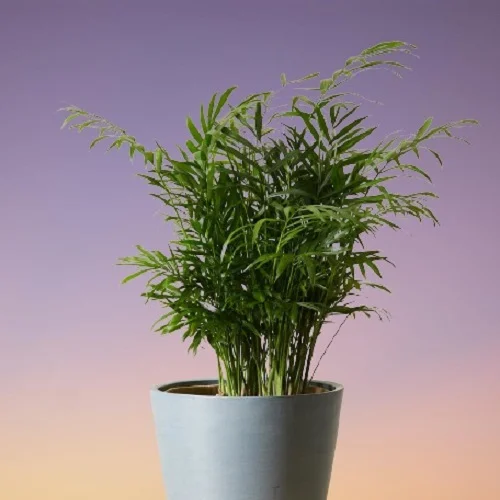
Parlour Palm is one of the popular palms and bears dense, deep-green, feathery foliage on arching branches with a minimal outward growth which makes it perfect for the limited spaces.
Parlour Palm is also ideal for a bottle garden or a terrarium. It has a high tolerance to low light conditions and is also a good indoor air cleaner.
Chamaedorea elegans will grow in medium to bright indirect light, moderate warmth, average humidity and moderately moist, rich, well-drained soil.
Learn more on how to grow and care for Parlour Palm
10. Silver Monstera (Monstera siltepecana)
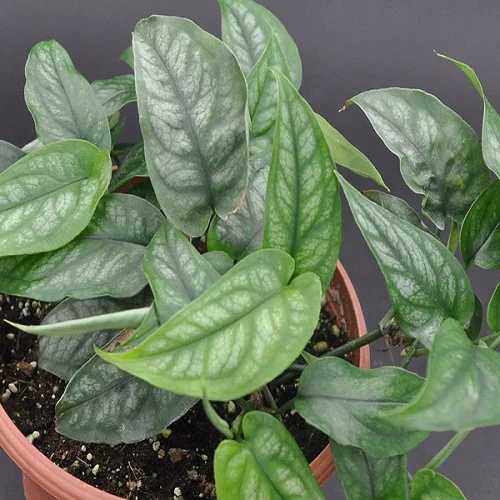
Silver Monstera also called Siltene Monstera among the popular Monstera varieties which exhibits two different appearances in its life stages where the young leaves are bluish-gray with distinct dark-green veins and become larger, dark-green and develop fenestrations (holes) as they mature.
Siltene Monstera and its relatives Monstera adansonii (Swiss Cheese Vine) and Monstera dubia are compact, vining plants perfect for the low-light, limited spaces.
Monstera siltepecana thrives in bright indirect light, warmth of 18-270C, humidity of 50-55% and moderately moist, fertile, well-drained Monstera potting mix coupled with monthly feeding in the growing season.
Read more on how to grow and care for Silver Monstera
11. Aluminium Plant (Pilea cadierei)

Aluminium Plant or Watermelon Pilea is an evergreen plant which bears dark-green oval leaves, each bearing raised silvery patches and hence the common names.
Watermelon Pilea is a low-growing, moisture-loving plant which grows to a height of 1 feet only and 18 inches wide. It is one of the best plants for the bathroom.
Pilea cadierei thrives in bright indirect light, warm and humid conditions and moderately moist, rich, well-drained soil.
Learn more on how to grow and care for Aluminium Plant
12. Lemon Button Fern (Nephrolepis cordifolia 'Duffii')
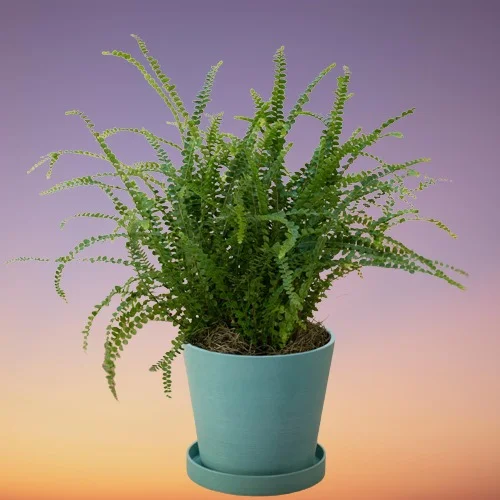
Lemon Button Fern also called Button Sword Fern, Fishbone Fern or Little-leaved Sword Fern is among the popular fern plants with gracefully, drooping stems and small, round, button-like leaves which release a lemony aroma when crushed, hence the common name 'Lemon Button Fern'.
Button Sword Fern is a compact fern which grows to a height of about 1 ft and 1 ft wide which like its cousin Boston Fern (Nephrolepis exaltata 'Bostoniensis') are perfect for limited spaces where they can be displayed in a hanging basket, on a tabletop, desktop or plant shelf.
Nephrolepis cordifolia 'Duffii' thrives in bright indirect light, warmth of 15-250C, humidity of 70-80% and consistently moist, fertile, well-drained soil coupled with fortnightly feeding during the growing season.
Read more on how to grow and care for Lemon Button Fern
13. Brown Spiderwort (Siderasis fuscata)

Brown Spiderwort or Bear Ears Plant is a small, moisture-loving plant whose short bronze-colored leaves form a rosette which makes it one of the best plants for a closed terrarium or a bathroom.
Bear Ears Plant can grow to a height of 1-1.5 feet and the leaves are only about 6-8 inches long. The compact size of this plant makes ideal for the small spaces.
Siderasis fuscata grows best in medium indirect light, warm and humid conditions and moderately moist, rich, well-drained soil.
Learn more on how to grow and care for Brown Spiderwort
14. Chinese Money Plant (Pilea peperomioides)
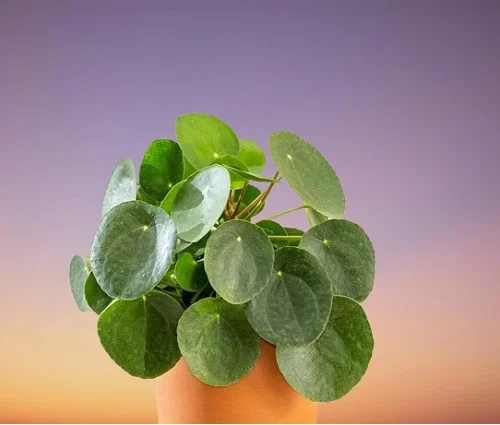
Chinese Money Plant also called Missionary Plant, Pancake Plant or UFO Plant is a low growing plant with a minimal outward spread which makes it one of the best plants for the limited spaces.
Missionary Plant is a low-maintenance, succulent plant ideal for a table-top, a shelf or a windowsill. It is also easy to propagate making it easy to share with friends and hence the name, 'Friendship Plant'.
Pilea peperomioides thrives in bright indirect light, warm and moderately humid conditions and moderately moist, fertile, well-drained soil.
Learn more on how to grow and care for Chinese Money Plant
15. Cast Iron Plant (Aspidistra elatior)
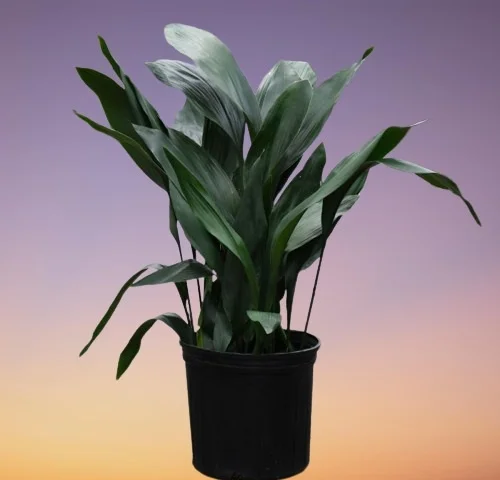
Cast Iron Plant is one of the hard to kill plants, an almost indestructible plant that easily adapts to varying indoor growing conditions. The plant is very tolerant to shade and can withstand some level of neglect.
The Cast Iron Plant grows to a height of about 1.5 feet to 2.5 feet where the glossy, dark-green leaves, about 12-20 inches long are grouped in small tufts of 2-4.
Aspidistra elatior grows best in bright indirect light, average warmth, moderate humidity and moderately moist, fertile, well-drained soil.
Read more on how to grow and care for Cast Iron Plant
16. Cebu Blue Pothos (Epipremnum pinnatum 'Cebu Blue')
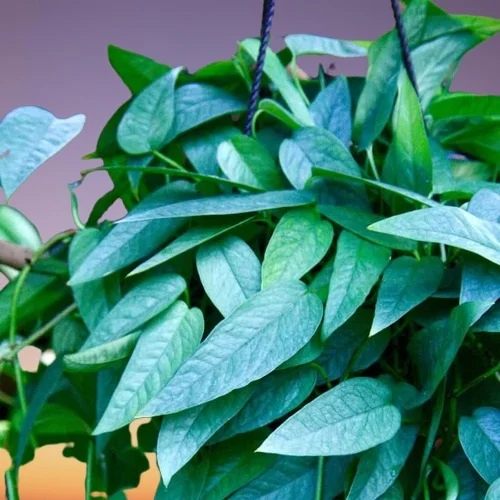
Cebu Blue Pothos is a low maintenance vine which is popular for its spectacular lance shaped leaves and climbing and trailing growth habit.
Cebu Blue like Baltic Blue Pothos can be grown in a hanging basket where the stems and leaves can cascade downwards beautifully or it can be provided with a climbing structure like a moss pole or a trellis.
Epipremnum pinnatum 'Cebu Blue' requires medium to bright indirect light, warm and humid conditions and moderately moist, fertile, well-drained soil.
Learn more on how to grow and care for Cebu Blue Pothos
17. Emerald Ripple Peperomia (Peperomia caperata)
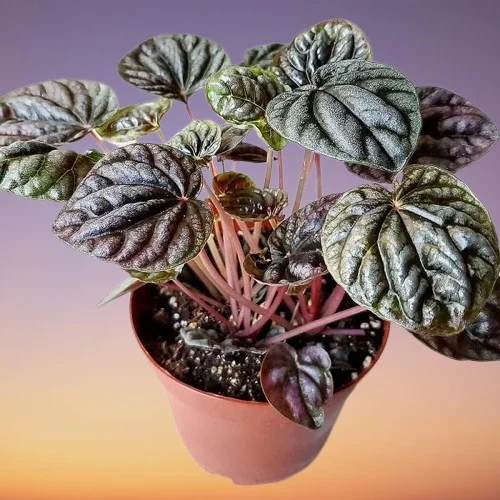
Emerald Ripple Peperomia is among the popular Peperomia varieties on account of its small, heart-shaped, deeply ridged leaves, ease of care and ability to adapt to a wide range of growing conditions.
Emerald Ripple Peperomia and its relatives Peperomia argyreia (Watermelon Peperomia), Peperomia glabella (Wax Privet Peperomia), Peperomia angulata (Beetle Peperomia), Peperomia orba (Teardrop Peperomia) and Peperomia clusiifolia (Peperomia Ginny) are compact plants which makes them ideal for the limited spaces.
Peperomia caperata thrives in a warmth of 15-260C, humidity of 60-70%, medium to bright indirect light (dappled light) and moderately moist, fertile, well-drained potting mix coupled with monthly feeding during the growing season.
Read more on how to grow and care for Emerald Ripple Peperomia
18. Maranta Plant (Maranta leuconeura)
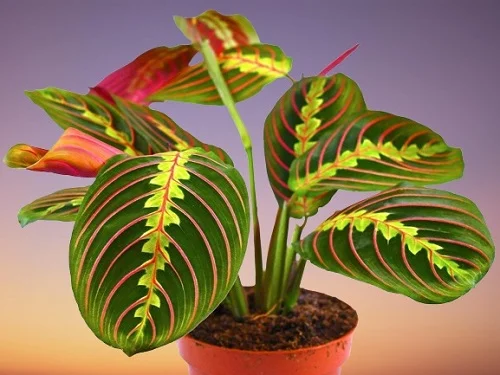
Maranta are low growing plants with long leaves known for their curious habit of folding and raising at night and hence their common name, 'Prayer Plants'.
Maranta Plants rarely exceed the height of 8 inches The leaves are about 6 inches long. These characteristics make them perfect for growing in limited spaces.
Marantas like Ctenanthe and Stromanthe thrive in partial light away from direct sunlight, a warm and humid enviroment and consistently moist, fertile, well-drained soil.
Learn more on how to grow and care for Maranta leuconeura
19. Calathea bachemiana (Goeppertia bachemiana)
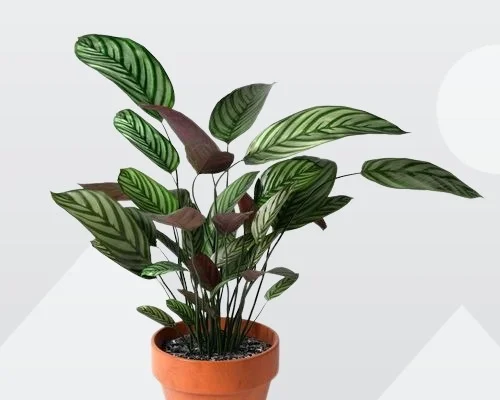
Calathea bachemiana also called Goeppertia bachemiana is one of the hardier Calathea varieties and bears long, blue-green leaves with dark-green stripes which are slightly thicker than in most Calatheas.
Goeppertia bachemiana is a compact plant growing in clumps to a height of 1-2 feet and along with its cousins Calathea fasciata (Goeppertia fasciata), Calathea picturata (Goeppertia picturata) and Calathea vittata (Goeppertia elliptica) are some of the best low-light plants for limited spaces.
Calathea bachemiana thrives in medium indirect light (dappled light), warmth of 16-260C, humidity of 50-60% and moderately moist, fertile, well-drained potting mix coupled with monthly feeding during the growing season.
Read more on how to grow and care for Calathea bachemiana
20. Rhaphidophora tetrasperma
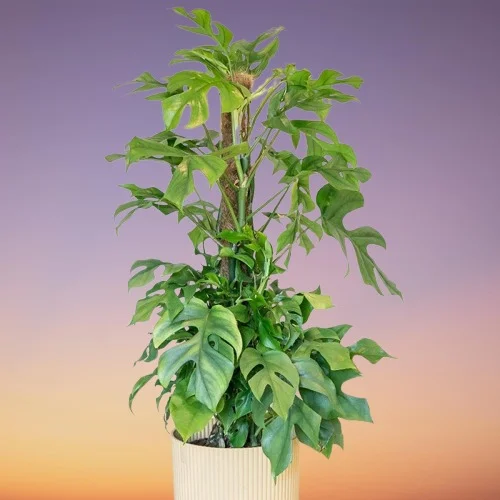
Rhaphidophora tetrasperma, often mislabelled as Mini Monstera, is an evergreen vine which bears leaves with split lobes and easily adapts to indoor growing conditions.
Rhaphidophora tetrasperma often mistaken for Monstera deliciosa or Epipremnum pinnatum is a climbing plant which can grow to a height of 12 feet when provided with a sturdy support like a moss pole or a trellis.
Rhaphidophora tetrasperma thrives in bright indirect light, warm and humid conditions and moderately moist, well drained soil that is rich in organic matter.
Read more on how to grow and care for Rhaphidophora tetrasperma
21. Silver Vine (Scindapsus pictus)

Silver Vine also called Silver Pothos, Satin Pothos or Silver Philodendron are evergreen climbing plants which bear matte green leaves covered in silver blotches with a satin sheen.
Silver Pothos like other Scindapsus pictus Pothos varieties can be treated as a trailer or climber, reaching up to 10 feet or the stems can be allowed to trail from a hanging basket or wall display.
Scindapsus pictus thrives in medium to bright indirect light, moderately warm and humid conditions and moderately moist, rich, well-drained soil.
Learn more on how to grow and care for Silver Vine
22. Watermelon Dischidia (Dischidia ovata)
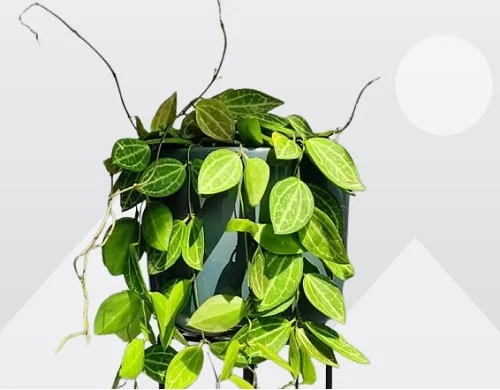
Watermelon Dischidia is a fast growing, vining plant which bears oval shaped leaves with markings which resemble the rind of the watermelon fruit and hence the common name.
Dischidia ovata like Dischidia nummularia and Dischidia ruscifolia bears trailing stems which cascade beautifully down the sides of a pot, a hanging basket or a pedestal. It is perfect for a table-top, a shelf or a window sill.
Dischidia ovata thrives in bright indirect light, average warmth and moderately moist, fertile, well-drained soil.
Read more on how to grow and care for Watermelon Dischidia

